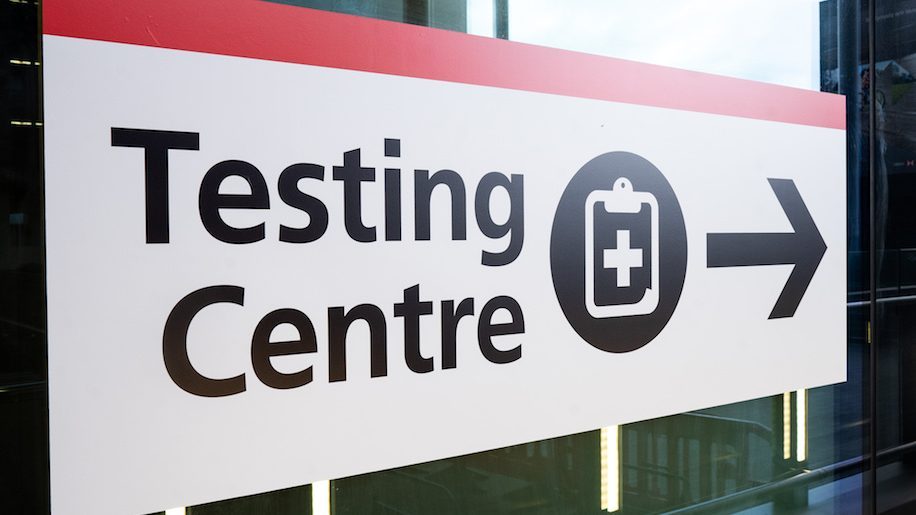
A study by consultancy firms Oxera and Edge Health has shown that a single on-arrival antigen test is as effective as a ten-day self-isolation period in reducing imported cases of Covid-19.
The report was commissioned by Virgin Atlantic, IAG, Heathrow, MAG and IATA, and has been submitted to the UK government’s Global Travel Taskforce to facilitate the safe restart of international travel this summer.
New modelling shows that antigen tests can reduce the number of infectious days of an international arrival by 63 per cent. In comparison, the UK’s previous border policy for countries without travel corridors – which comprised of a ten-day quarantine period with no testing – screens 62 per cent of infectious days.
These findings suggest that the effectiveness of a single antigen test has been underestimated, with SAGE previously reporting that it would screen only 11 per cent of infectious travellers.
What are infectious days?
Infectious days are the average number of days that an infected individual (symptomatic or asymptomatic) spends in the community risking the transmission of the virus to others. The authors of the report calculated infectious days that would be released into the community by summing up the number of days an individual was not in quarantine while being infectious.
According to Oxera and Edge Health, they have been able to capture a better view of its effectiveness at reducing infection spread because “unlike infectious individuals screened, once non-compliance is introduced, infectious days screened accounts for changing compliance levels upon receipt of a positive test or upon developing symptoms.”
What does the report advise with regards to the reopening of international travel?
The report states that a single rapid antigen test would be appropriate for arrivals from the majority of countries categorised as medium risk. These are countries with medium cases or lower vaccination rates, and would be designated as ‘amber’ if the government decides to apply a traffic light system for foreign travel this summer.
When comparing the dual- and single-testing schemes, the report found that the two-test approach screens just 5–9 per cent of additional infectious days compared to one test.
Additionally, analysis of real-world 2020 US/EU passenger data reveals that even a single on-departure antigen test would have reduced the imported case rate below existing UK community transmission levels.
What about high-risk countries?
The report adds that a two-test strategy involving a 72-hour pre-departure antigen test combined with a three-day quarantine with PCR test could be a viable option for higher-risk countries. Evidence shows that this strategy allows for the screening of 87 per cent of potentially infectious days, which is just one percentage point lower than a two PCR tests. This strategy would also still ensure that the UK can track and genome sequence the tests of passengers and reduce the risk of importing variants.
How does this compare to the rules at the moment?
As it stands, travellers are required to take a pre-departure test within 72 hours of travel to England, followed by a ten-day quarantine at home with two PCR tests costing £210 for administration on days two and eight of self-isolation. This is replaced by a ten-day hotel quarantine costing £1,750 with two PCR tests for anyone arriving from a red list country.
Michele Granatstein, Partner at Oxera and Head of its Aviation practice, said:
‘The ultimate goal for governments must be to return to frictionless travel between countries that are considered lower-risk. The vaccine roll-out, combined with internationally agreed standards on digital solutions to evidence Covid-status certification, will be intrinsic to that, but people should be able to travel safely, with or without a vaccine.
“Our analysis of the effectiveness of different quarantine and testing strategies shows that the UK government can safely restart international travel at scale while tailoring test requirements and restrictions on a country-by-country basis.”
George Batchelor, Co-founder and Director of Edge Health, added:
“When the skies reopen, it’s clear that a proportionate Covid-19 testing regime will remain an effective line of defence to support international travel to and from the UK.
“Given the success of the UK vaccination programme, and in line with the UK government’s risk-based approach to the wider economy, any restrictions should be targeted at reducing the potential import of variants of concern. Our modelling demonstrates that a single antigen test for medium-risk countries and dual-test approach for higher risk countries, combined with three-day quarantine, could be an effective strategy to protect public health, while removing the burden of a ten-day quarantine.”
Shai Weiss, CEO of Virgin Atlantic, also commented on the findings:
“We believe that international travel can safely restart at scale, using a risk-based, phased easing of testing requirements and border restrictions, that follows the scientific evidence.
“In parallel to the world-leading UK vaccination programme, seamless travel between the UK and lower risk countries – such as the US, Caribbean and Israel – must remain the objective, enabling the free movement of people and goods that are vital to the UK’s economic recovery. When applied to the Government’s proposed traffic light framework, this new modelling by Oxera and Edge Health demonstrates how robust and proportionate testing strategies can be applied to amber and red countries, protecting public health by reducing imported infections and capturing variants of concern early through genomic sequencing.
“Along with industry partners, Virgin Atlantic continues to input to HMG’s Global Travel Taskforce as it develops a framework to safely reopen the skies from May 17th. We urge the UK Government to adopt a flightpath for travel, tourism and aviation that reconnects loved ones, bolsters economic recovery and supports a truly Global Britain.”
The government’s Global Travel Taskforce is due to report on April 12, 2021 and is expected to introduce a ‘traffic light system’, with some countries on a red list, while others are on amber or green.












